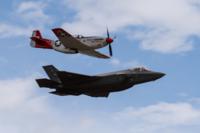While there won't be any grunts manning the rotors of a $6 million military helicopter anytime soon, there could still be some qualified to fly them. The secret is in advanced drone technology that makes the task as easy as flying an off-the-shelf quadcopter back home. All they need is a tablet device.
If it sounds outlandish, Marine Corps infantrymen have already flown a UH-1H Huey after a few hours of instruction, using a tablet and a laptop computer. In 2017.
Spearheading the drive to autonomous helicopters and other technologies is the Innovation team at Sikorsky Aviation, led by Igor Cherepinsky, director of Sikorsky Innovations.
"I get to run a group of very talented people who go out and design all sorts of new things," Cherepinsky said. "Aircraft, software, ideas ... we kinda serve as an incubator for new and exciting things."
Cherepinsky's team not only develops the ideas behind these innovations, it designs and builds flying prototypes. Once the idea is matured, it hands the inventions off to the rest of Sikorsky to figure out how best to build them into viable products.
In the latest episode of Military.com's podcast "Left of Boom," Managing Editor Hope Hodge Seck talks with Cherepinsky about some of the programs Sikorsky has developed and what the Lockheed Martin-owned company has in store for the future.
1. The Fastest Military Helicopter
In 2008, Sikorsky Aviation created the world's fastest helicopter. Dubbed the X2, it was capable of speeds greater than 300 mph, shattering the previous record of 249 mph set by a U.K.-made Westland Lynx in 1986.
That technology is being used today to develop the Army's S-97 Raider attack helicopter, a replacement for the Bell OH-58D Kiowa Warrior or MH-6 Little Bird, among other possible uses. The Raider uses Sikorsky's X2-style coaxial rotor technology and has already had its first flight.
2. 'Loyal Wingman' Drones
This is a program designed to deploy unmanned, autonomous drones in tandem with the F-35 Joint Strike Fighter, giving the F-35 pilots an "unmanned wingman in the air." This program, run by Boeing, takes retired F-16 Fighting Falcon fighters and transforms them into unmanned drones. The Air Force Research Laboratory began the program in 2018, planning for a proof-of-concept flight by 2022.
Boeing already delivered a "loyal wingman" prototype to the Royal Australian Air Force in May 2020.
Read: Boeing Delivers First 'Loyal Wingman' Drone Prototype for Testing
3. Easy-to-Fly Autonomous Helicopters
Many pilots will tell you that helos are not the easiest machines to fly. In fact, many also say they're constantly fighting the helicopter because it's a machine that "wants to crash." How much of an exaggeration this is will be known only to helicopter pilots who have actually manned the controls of one. Future helicopter pilots may never get in the cockpit.
Sikorsky has developed an autonomous flight control system called SARA (Sikorsky Autonomy Research Aircraft) so easy to learn and use that it allows first-time pilots (that is, people who have never flown anything, let alone a rotary aircraft) take the helm.
A grunt flying a helicopter really isn't that far away.
4. Future Vertical Lift
The FVL program is an effort to transform the Army rotorcraft fleet. Five designs are intended to completely replace the UH-60 Black Hawk, AH-64 Apache, CH-47 Chinook and OH-58 Kiowa helicopters.
Utilizing the technology developed by Sikorsky's innovation team to develop the X2, Sikorsky introduced the Raider X and the SB-1 Defiant.
The Defiant is designed to deliver soldiers as fast and stealthily as possible, flying twice as far and twice as fast as the Black Hawk, all in the same operational footprint. The Raider X is a two-seater attack helicopter designed to replace the Kiowa. The SB-1 has already flown its first flight, while the Raider X is still in development.
To learn pretty much everything you need to know about the near future of military aviation, be sure to listen to the latest episode of Military.com's Left of Boom podcast.
Tune in to new episodes of Left of Boom every two weeks on iTunes, Google Podcasts, Spotify, TuneIn and Stitcher. Follow Hope Hodge Seck on Twitter @HopeSeck, and if there's a military hot topic you want to know about, drop Left of Boom a line at podcast@military.com.
-- Blake Stilwell can be reached at blake.stilwell@military.com. He can also be found on Twitter @blakestilwell or on Facebook.
Want to Learn More About Military Life?
Whether you're thinking of joining the military, looking for post-military careers or keeping up with military life and benefits, Military.com has you covered. Subscribe to Military.com to have military news, updates and resources delivered directly to your inbox.

















